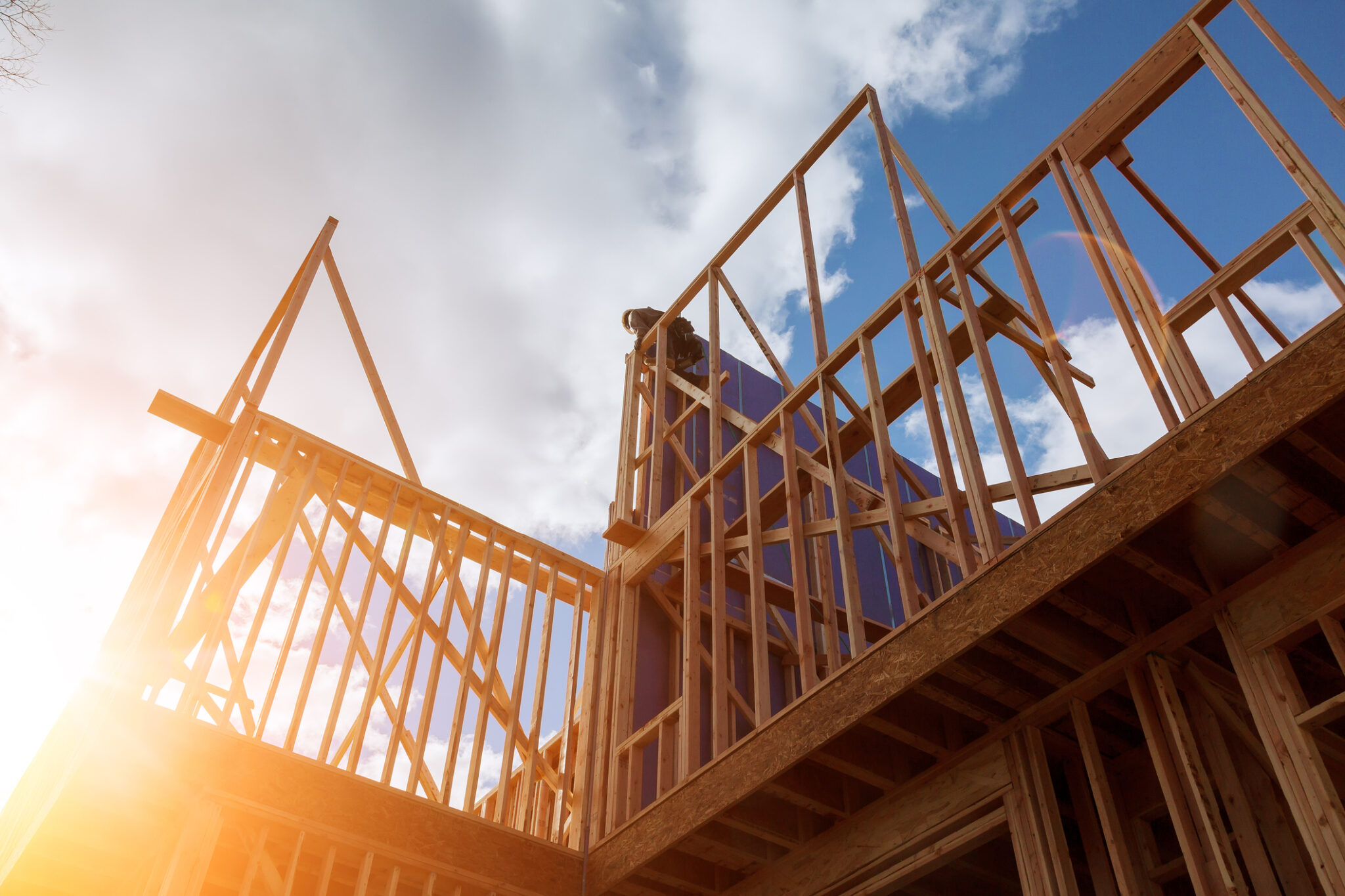Let’s look at the process to build a house. Assume your home is being built in a typical master-planned community, a large new home development.
The process actually started when the developer planned the new home community. An overall plan was created that includes the type of homebuyers to target and what types of new homes to construct. Based on this information, the developer then selects builders for the new community and creates a detailed master plan that identifies the size, type, and price range of new homes to construct.
Here are the five steps in the process to build a house:
- Choosing a Floor Plan
- Getting an Estimate
- Understanding the Builder Contract
- Appraisal of Construction
- Completion and Issue of Occupant Certificate
As a side-note, it may help to prequalify for a new construction loan, and a mortgage loan, so that you’re more aware of how much you can spend.
1. Choosing a Floor Plan
Start by selecting a floor plan. Builders will have a number of floor plans from which to choose to determine the size, style, quality, and features you desire in your new home.
Blueprints are the original building plans that detail the structure and formation of a piece of real property. Prior to architectural technology, blueprints were the easiest and most economical way to develop and share property designs. Most municipalities still require and maintain copies of blueprints for every new construction or addition.
Your blueprints can provide you with the most detailed information you can find, which is useful when building a new home and remodeling or building an addition to your home.
2. Getting an Estimate
The next step in the process to build a house is getting an estimate. Arriving at an exact figure for new home costs per square foot is not always realistic, but can still give you a general idea. To do this, take the total cost of your project, as outlined by your builder, and divide this number by the total number of square feet in your project.
Also, know what style, quality, and features are referred to in relation to estimating your new construction costs; leave room in your budget to accommodate additional construction costs. To avoid cost overruns, be proactive working with your new-home builder to create as detailed a construction contract as possible.
3. Understanding the Builder Contract
Before you sign, review and understand the contract. It serves to reflect your understanding, to make sure everyone is in agreement before the actual work begins, and to provide a guide to follow in case a problem arises later.
Take the time to understand the entire contract, and take the steps necessary to protect your interests, as follows:
- Make sure your contractor has a license
- Verify with your contractor that he or she is insured (contractor’s risk, workman’s compensation)
- Check your contractor’s references and consult the better business bureau for further information
- Review any contract the contractor provides to you – make sure it is clear and complete
- Consider hiring a professional to review the plans and specifications
- Consider hiring an attorney to review and explain the contract to you, and
- Most importantly, negotiate the contract with the contractor.
4. Appraisal of Construction
Your mortgage lender will require an appraisal of your new construction home before approving your loan. The lender needs to ensure that the property is worth the amount of the loan being considered.
New construction home appraisals can cause lenders problems because comparable homes may not exist. To meet lender needs in the appraisal process, homebuilders keep building plans for homes they construct and specifications listing construction materials used. Also kept are breakdown lists for labor on every home they build.
A new construction plan shows where the home’s plot is located on the building site as well as any accessory buildings. Your homebuilder will give your mortgage lender the home’s building plan, spec sheets, cost breakdown and plot plan so that an appraisal can occur.
Regardless of the approach used, the appraisal must contain some essential elements, including:
- Size of your new construction home
- The property being appraised
- The scope of the work being performed
- Value of the estimate and how it was derived
As part of the process to build a house, the home appraisal process also requires appraisers to use forms that allow data and analysis to be clearly presented.
The home appraisal will allow a mortgage lender to approve your new construction loan. Unlike a mortgage loan, a new construction loan will act as a line of credit, where interest is paid as credit is used, and the line closes upon completion of construction.
5. Completion and Issue of Occupant Certificate
The process to build a house requires a schedule that brings the right people, the right materials, and the right methodology and inspections all together.
Your builder is your point of contact for visiting your house while it’s being built. Many builders offer pre-determined times to tour a home during key points of construction, such as a walk-through at the framing or pre-drywall stage. This is a good time to ask your superintendent questions about what’s behind the walls (such as insulation, wiring or plumbing) and other measures that add comfort and energy-efficiency to your home.
Inspections are also done during the construction process, usually before the drywall is hung, and again before you move in.
Your builder will have his own inspectors who ensure each home is completed to the company’s quality standards. In addition, city or county building inspectors will check that the various systems in your home meet local building codes. Codes vary by location but typically include:
- The footings, foundation work and water and sewer lines before any concrete is poured
- Inspections of the framing and mechanical systems (electrical, plumbing and HVAC)
- The building envelope, which includes the roof, windows, doors and exterior coverings, such as siding, stucco and brick
- Insulation
After You’ve Built Your Home
After your construction is completed, the construction loan used to build your home will need to be paid off. You have complete freedom in choosing your bank for your mortgage.
When the construction loan is closed and the final inspection is completed, a certificate of occupancy is issued. When it is, your home building process is complete and you are ready to move in. Welcome home.




